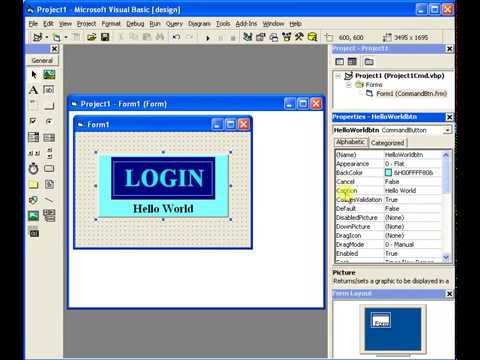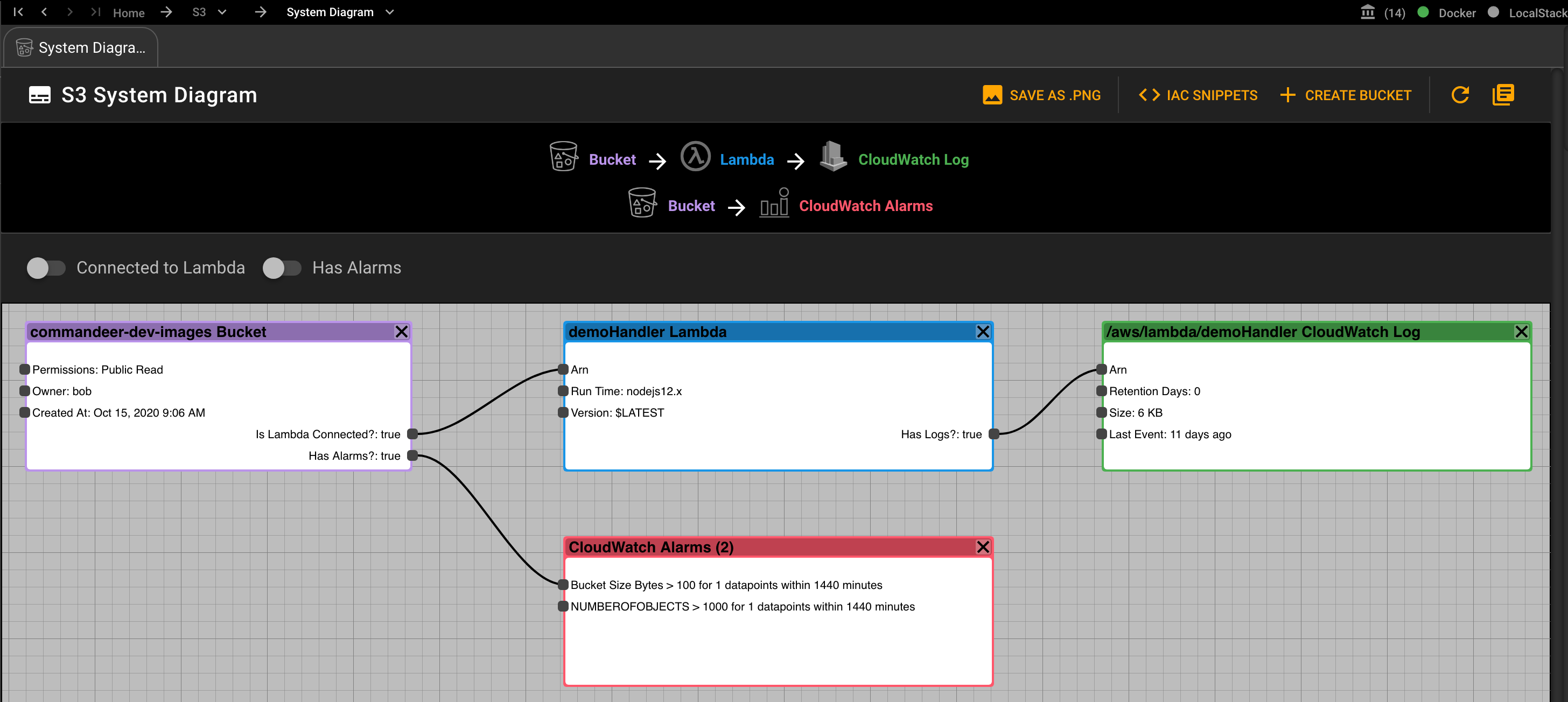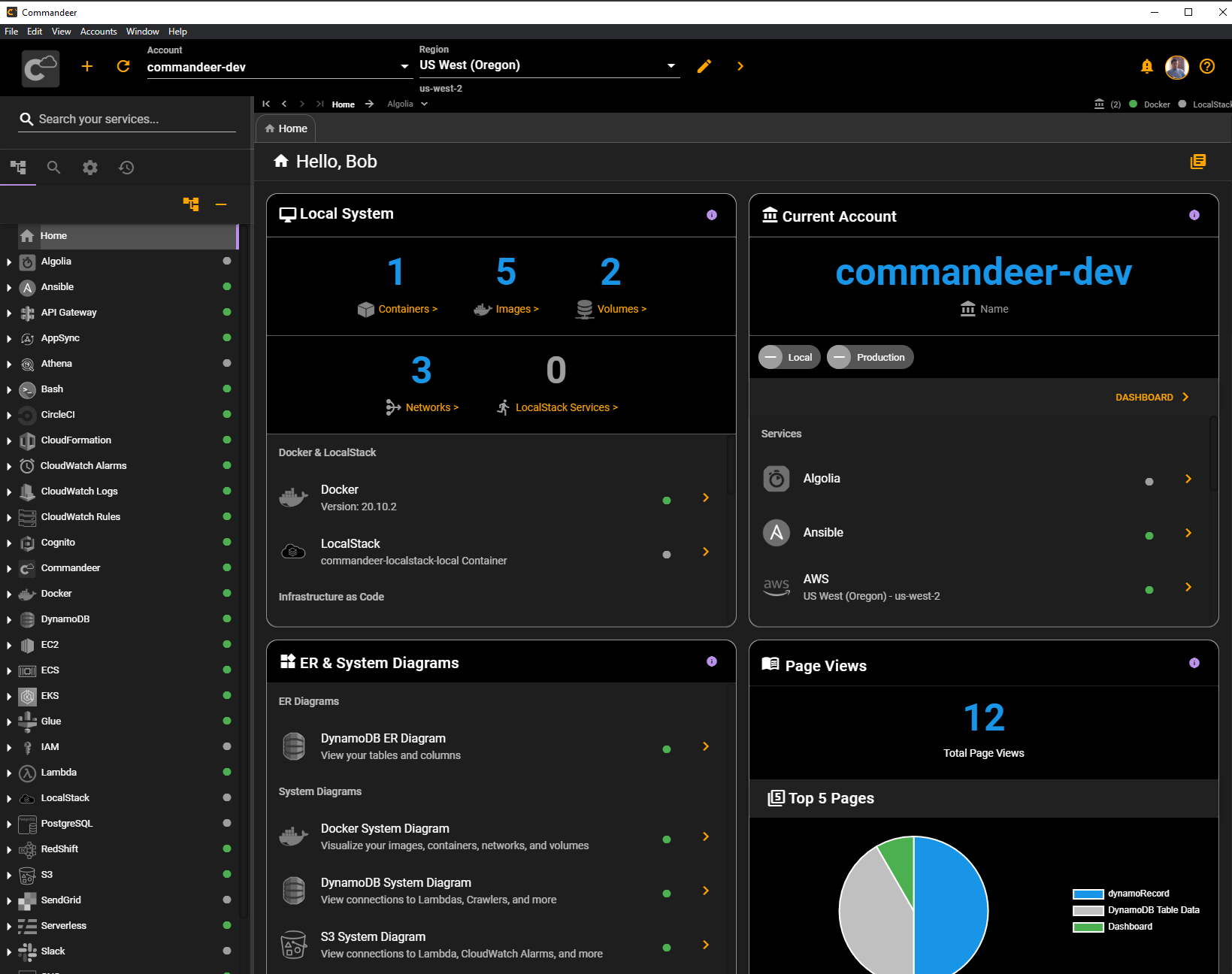Just press play. Inspirations for Commandeer rooted in Visual Studio.
# Just press play. Inspirations for Commandeer rooted in Visual Studio
When I came out of college. I had a Computer Science degree, and almost no experience in actually building software for companies. I had an internship at Rite Aid, and was a fan favorite of the ladies working in accounting, because I started to build forms for them to easily manage their Access database. The first real company I worked for after graduation was, TransCore. Another 20-something and I were tasked with building a toll collector auditing system for the Pennsylvania Turnpike Commission. It was a mult-year, multi-million dollar contract.
Download the Commandeer App - 15-day Free Trial - The #1 developer IDE to manage your serverless and container infrastructures, both locally and in the cloud. With support for 30+ of the best cloud services out there.

We built the app using VB6 (Visual Basic 6). What was profound back then, was that you could just drag buttons onto the screen, and double-click on them to bring up the code to actually write your logic. When you wanted to see your creation, you pressed the play button, and voila, you were running your code. This was always quite magical, and as I continued on my career, I continued to make powerful tools using VB6 and then VB.Net, and finally graduating to C#. The warm, comfortable Visual Studio world would never leave me!
# Switching to Web 2.0
Then, I got the itch to move our to the west coast, to chase the startup dreams. I started to build website using raw html, php, and even ASP, and ASP.NET. Suddenly I realized it was quite painful to do many of the things you take for granted in the desktop .NET ecosystem. That was until I stumbled upon Node.js and DotCloud. You could now magically get a web server running in 3 lines of code. And then you could instantly deploy it to the cloud. That same magical feeling I had when I dropped a button onto a VBA Form, happened again. And just like that...it left. DotCloud closed shop, or more correctly, moved on to bigger and better things than being just an Apache replacement. They would become Docker. I remember sitting in on some of their meetups in a high-rise in San Francisco, and knowing they were onto something big.

Enter 2016, and we moved our work into the AWS cloud, like many, many people at that time. Unfortunately, that meant the infamous words "If you are using the console, you are doing it wrong." Time after time, I continue to hear this same refrain. As almost a badge of honor, developers, or more specifically, non-Microsoft developers the world over, have resigned to the fact that if you want something done right, you have to be in a terminal or text only IDE.
While I am as big a fan as anyone in knowing some of the most arcane command line arguments imaginable, I like to build systems that use many services. Best-of-breed development is how I like to think about it. For many of our systems I have helped build over the past 5 years, we would easily use 10-20 cloud services, and wired them all together. The industry has definitely moved developers from being great coders to being master electricians and plumbers of the cloud, stitching together many services to make their masterpiece.
You might use SendGrid for emails, API Gateway for your API, SQS for your queuing. You might also have a long running processor built in a Docker container. Then you host your website on Firebase, which has the easiest deployment system for websites I have ever found, including complete rollbacks, etc. And your instant search capabilities might be built using Algolia. All of a sudden, you are managing 20 services across 3 environments: dev, staging, and production. Meaning you have 60 services you are supporting. The next developer you hire comes in from a nice, boring LAMP stack, and they are like what the hell have I gotten myself into.
# Back to the Basics
We were sitting in a board room, white-boarding a new piece of infrastructure to handle a complex business problem. It was going to use SQS, S3, and multiple Lambdas. On the white board, it looked quite simple as always. But, as we had done these things many times before, the transition from the white board, to laying it down in code, was going to be a lot of house. This is when I said, we have to build Commandeer. We are die-hard developers at heart, and the pain of having to only be able to visualize and manage our system from a whiteboard was too much to bear any longer.

I didn't want to take away the general feeling of being a developer, the ability to write some code in a bare bones IDE is always appealing. But, at the same time, these big, complex systems running on AWS and Docker were just not observable at all to a developer getting involved. Yes, you could run some commands on the terminal to see certain things, or login to the AWS console. But, it just isn't enough. A tool to be able to see everything, and drill-down into different components of your system, view pieces of data across multiple data sources, and visualize your events, containers, and all other pieces of your system in one place is what is needed.

Our goal is ambitious, and we have only scratched the surface of what is needed for the new cloud ecosystem, but we are well on our way. We hope you want to join us on making cloud development as fun and magical as pressing play on a VBA project was for me.
Happy Developing!

